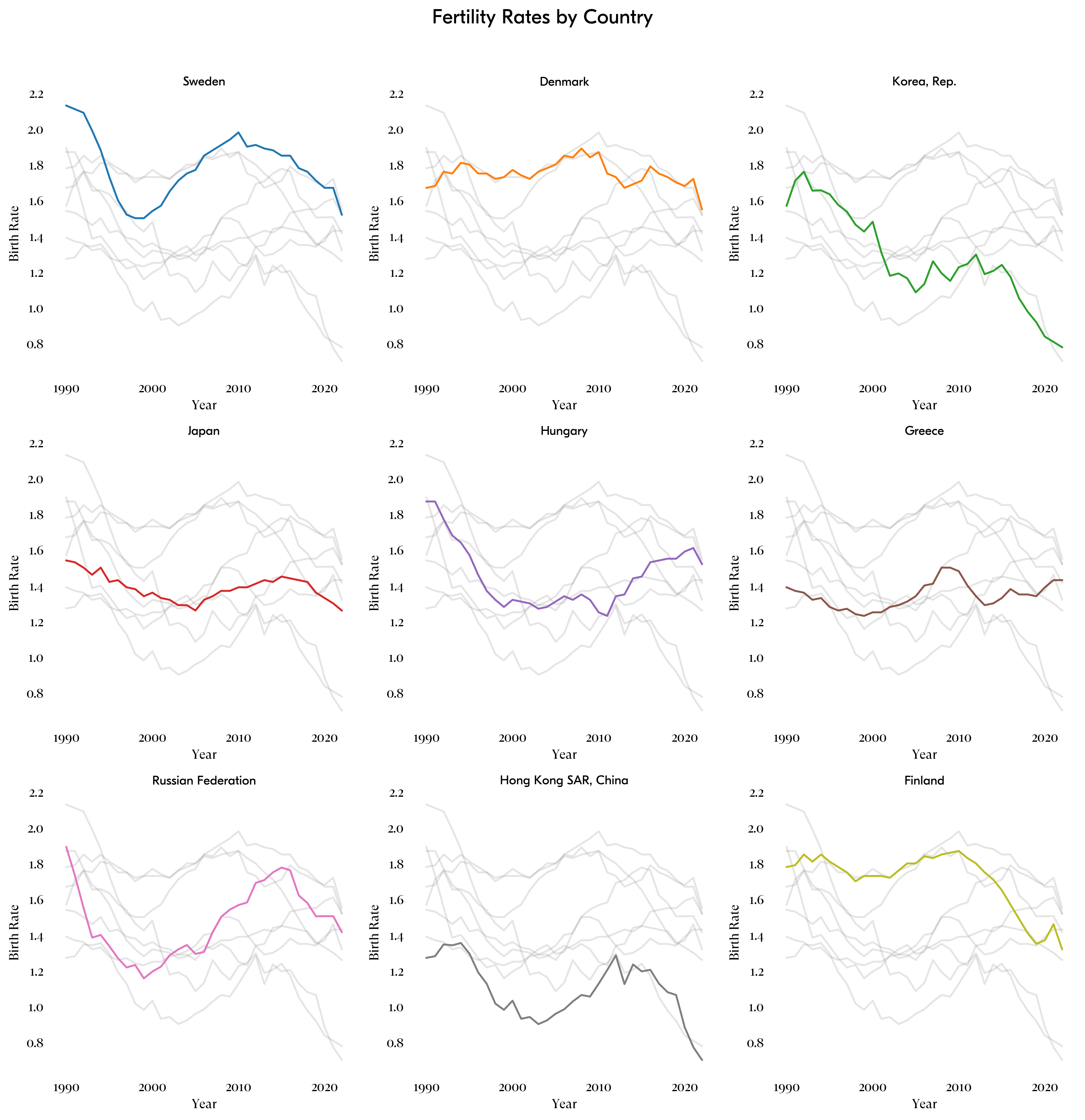Impact of Birth Rate Incentives
Causal Inference Birth Rate.
South Korea 2001: Pronatalist cash transfer policy
Russia 2006: "Maternal capital" program
Japan 1994: Angel Plan
Policy Impact Summary
Select a country and adjust parameters to see the estimated policy impact.
Introduction.
Birth rates in developed countries are plummeting, with most nations now falling below the population replacement rate (source). This unprecedented demographic shift threatens to reshape economies, as shrinking workforces struggle to support aging populations. Without a major economic transformation, the next generations may face declining living standards and a labor shortage too severe to sustain long-term growth.
Discussion
My friend and I had a lengthy discussion where we explored potential solutions, particularly the role of artificial intelligence in mitigating workforce shortages. We shared the assumption that reversing the declining birth rate trend is extremely difficult, if not impossible.
Some key points from our discussion:
- Once a country reaches a certain level of development, having children may become a lower priority.- Japan serves as a strong case study since it resists immigration and faces a rapidly aging population.
- Even in countries that welcome immigration, if global birth rate declines persist, there may eventually be too few people to fill workforce gaps—even through immigration.
- The trend appears to be universal, cutting across cultures and persisting despite government incentives.
The Central Question
Given that the articles argue governmental aid and incentives have had limited success, I wanted to investigate from a causal inference perspective:
Are these incentives actually making a difference?Methodology.
Methods Used:
- Synthetic Control Method
- Doubly Robust Estimation
- Causal Graph Visualizations (DAGs)
Sources.
(1) The baby gap: why governments can't pay their way to higher birth rates
(2) Falling birth rates raise prospect of sharp decline in living standards
(3) Fertility Decline and Policy Development in Japan
(4) Japan's Changing Fertility Mechanisms and Its Policy Responses
(5) Fertility Decline and Governmental Interventions in Eastern Asian Advanced Countries
(6) Maternity (Family) Capital - Russia
(7) Assessing the Impact of the Maternity Capital Policy in Russia Using a Dynamic Model of Fertility and Employment
(8) Childbearing and the distribution of the reservation price of fertility: The case of the Korean baby bonus program
(9) Data - World Bank
